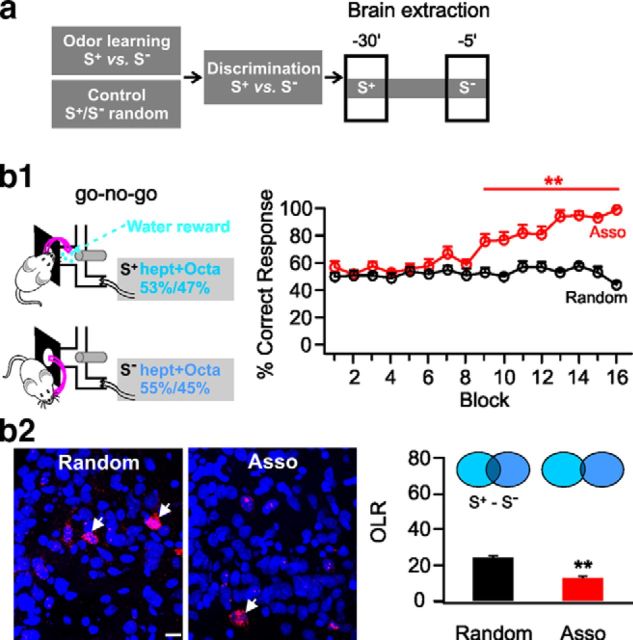Figure 3.
Similar odor discrimination learning promotes pattern separation. a, Schematic of similar odor discrimination training and brain extraction protocol. b1, Go–no-go behavioral paradigm (left) and percentage correct responses in the associative (Asso) group and the random group (right). b2, Representative images of Arc+ cells in the aPC (left) and overlap ratios (OLRs) of the cell ensembles representing S+ (1-heptanol plus 1-octanol, 53%/47% mixture) and S− (1-heptanol plus 1-octanol, 55%/45% mixture; right). Arrows indicate double-stained Arc+ cells. hept+Octa, 1-heptanol plus 1-octanol; Scale bar, 20 μm. **p < 0.01.

